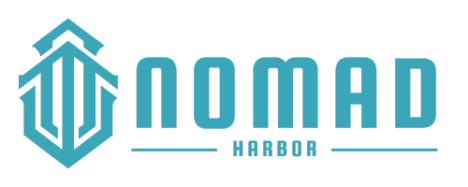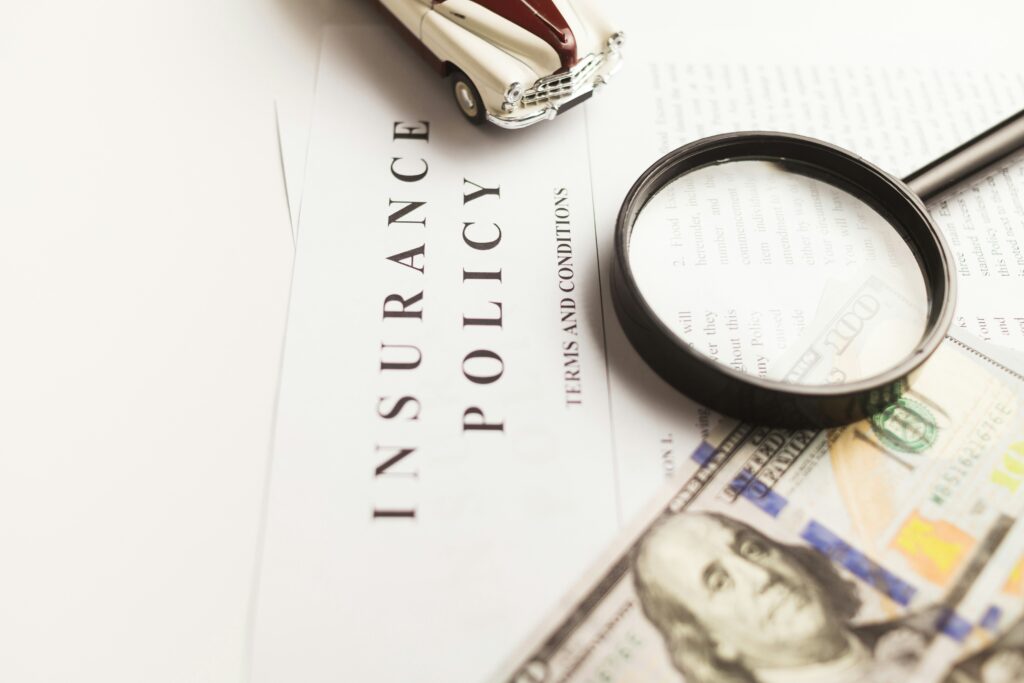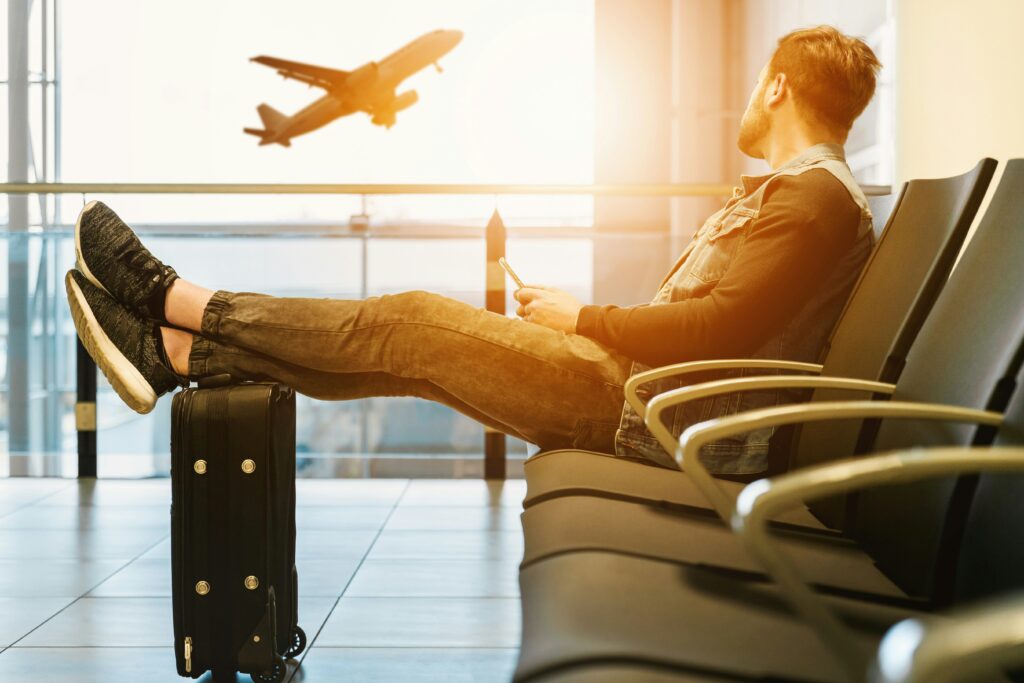For digital nomads, the freedom to work from anywhere in the world comes with a unique set of challenges, and one of the most critical—yet often overlooked—is ensuring you’re properly insured. Whether you’re drafting blog posts from a café in Tbilisi, managing your hookah bar in Bad Soden-Salmünster remotely, or exploring the beaches of Costa Rica between client calls, unexpected events like medical emergencies, trip cancellations, or lost gear can derail your journey. In 2025, as the digital nomad community continues to grow, having the right insurance isn’t just a safety net—it’s a necessity for sustaining your lifestyle long-term.
At Nomad Harbor, we’re committed to equipping our readers with the tools and knowledge to thrive as digital nomads. In this 3500-word guide, we’ll explore the essential types of insurance every nomad needs in 2025, with a focus on SafetyWing, a leading insurance provider tailored for remote workers. We’ll break down why each type of coverage matters, share practical tips for choosing the right plan, and highlight how SafetyWing’s affiliate program can help you earn passive income while protecting yourself on the road. As part of our affiliate partnership with SafetyWing, we may earn a commission if you purchase through the links in this article—at no extra cost to you. Let’s dive in and ensure you’re covered for whatever 2025 throws your way!
Why Insurance Matters for Digital Nomads in 2025
The digital nomad lifestyle has exploded in popularity, with a 2024 MBO Partners report estimating over 17 million digital nomads in the U.S. alone, and millions more globally. A 2025 article on Two Tickets Anywhere notes that 51% of nomads stay in a single location for 15-90 days, meaning they’re often in transit or living in unfamiliar environments for extended periods. This constant movement increases exposure to risks like medical emergencies, travel disruptions, and theft—risks that traditional insurance plans often don’t cover for long-term travelers.
For Nomad Harbor readers, who are often balancing remote work with exploration, the stakes are even higher. A medical emergency in a foreign country can cost thousands of dollars without insurance, and a stolen laptop can halt your income stream overnight. A 2023 Nomad Finance and Freedom article highlights that 1 in 4 nomads has experienced a travel-related emergency, yet only 60% carry travel insurance. In 2025, with global travel regulations tightening and healthcare costs rising, being uninsured is a gamble you can’t afford to take. Let’s explore the key types of insurance every nomad needs to stay protected.
Essential Insurance Types for Digital Nomads
1. Travel Medical Insurance: Your First Line of Defense
Travel medical insurance is the cornerstone of any nomad’s insurance plan. It covers medical emergencies while you’re abroad, including doctor visits, hospital stays, and emergency evacuations. Unlike traditional health insurance, which may not cover you outside your home country, travel medical insurance is designed for global travelers.
Why It’s Essential: A 2024 article on Digital Nomad Soul cites a case where a nomad in Thailand faced a $15,000 hospital bill after a motorbike accident—without insurance, they had to crowdfund to cover the cost. Even minor issues, like a stomach bug requiring a doctor’s visit, can cost $100-$300 in some countries. For nomads, who often lack access to a local healthcare system, travel medical insurance ensures you can get care without breaking the bank.
SafetyWing’s Solution: SafetyWing’s Nomad Insurance is a top choice for digital nomads, offering comprehensive travel medical coverage starting at just $45/month for ages 10-39 (prices vary by age and location). It covers:
- Hospital stays, doctor visits, and prescription drugs.
- Emergency medical evacuation up to $100,000.
- 24/7 assistance for finding care in any country.
I started using SafetyWing in 2023 during a trip to Vietnam. When I caught a nasty flu in Hanoi, SafetyWing covered my $120 doctor’s visit and antibiotics, and the claims process was seamless—I submitted everything online and was reimbursed within a week.
Recommended Product: SafetyWing Nomad Insurance. Get a quote here and support Nomad Harbor through affiliate commissions.
Cost-Saving Tip: SafetyWing operates on a subscription model, billing every 28 days, and you can cancel anytime. If you’re only traveling for a short period, pause your coverage to save money.
2. Trip Cancellation and Interruption Insurance: Protect Your Plans
Trip cancellation and interruption insurance reimburses you for non-refundable expenses if you need to cancel or cut short your trip due to unforeseen events like illness, family emergencies, or natural disasters. This is especially important for nomads who book flights and accommodations months in advance.
Why It’s Essential: A 2025 article on Nomads Embassy notes that 30% of nomads have had to cancel a trip due to unexpected events, often losing hundreds of dollars on non-refundable bookings. For example, if you book a $500 flight to Bali and a family emergency forces you to cancel, trip cancellation insurance can help you recover that cost.
SafetyWing’s Solution: SafetyWing’s Nomad Insurance includes trip interruption coverage up to $5,000, which reimburses you for unused, non-refundable expenses if you need to return home early. It also covers trip delays (e.g., delayed flights) up to $100/day for accommodations and meals.
During a 2024 trip to Japan, my flight from Tokyo to Osaka was canceled due to a typhoon. SafetyWing covered my $80 hotel stay for the night, plus meals, while I waited for the next flight. This small but crucial coverage saved me from dipping into my savings.
Recommended Product: SafetyWing Nomad Insurance. Get a quote here.
Cost-Saving Tip: Book flights and accommodations with flexible cancellation policies whenever possible (e.g., through Booking.com, as recommended in Nomad Harbor’s previous articles). This reduces your reliance on trip cancellation insurance, saving you money on premiums.
3. Baggage and Personal Belongings Insurance: Safeguard Your Gear
Baggage and personal belongings insurance covers the loss, theft, or damage of your luggage and personal items, including your laptop, camera, and other work essentials. For digital nomads, who rely on their gear to earn a living, this coverage is non-negotiable.
Why It’s Essential: A 2023 Nomad Finance and Freedom article reports that 1 in 10 nomads has experienced theft while traveling, with laptops being a top target. Replacing a MacBook Pro can cost $1,500 or more, not to mention the downtime while you source a replacement in a foreign country.
SafetyWing’s Solution: SafetyWing’s Nomad Insurance includes baggage coverage up to $3,000, with a $500 sub-limit for electronics like laptops and cameras. It also covers baggage delays, reimbursing you up to $100/day for essentials if your luggage is delayed more than 12 hours.
In 2022, my backpack was stolen while I was in a coworking space in Mexico City. My laptop and camera, worth $2,000 combined, were inside. SafetyWing reimbursed me $500 for the electronics (the sub-limit) and an additional $300 for other items, which helped me replace my gear without derailing my budget.
Recommended Product: SafetyWing Nomad Insurance. Get a quote here.
Cost-Saving Tip: Invest in a good anti-theft backpack, like the Pacsafe Venturesafe EXP45, available on Amazon. It’s slash-proof and has lockable zippers, reducing the risk of theft and your need to file a claim.
4. Emergency Evacuation and Repatriation Insurance: Plan for the Worst
Emergency evacuation and repatriation insurance covers the cost of transporting you to the nearest adequate medical facility—or back to your home country—in the event of a serious medical emergency. It also covers repatriation of remains in the worst-case scenario.
Why It’s Essential: A 2024 article on The Professional Hobo cites a case where a nomad in rural Peru needed an emergency evacuation after a hiking accident, costing $20,000 without insurance. For nomads who often travel to remote areas, this coverage can be a literal lifesaver.
SafetyWing’s Solution: SafetyWing offers emergency medical evacuation coverage up to $100,000, including transportation to a medical facility or your home country if medically necessary. They also cover repatriation of remains, providing peace of mind for you and your family.
I haven’t needed this coverage (thankfully), but knowing it’s there gives me confidence to explore off-the-beaten-path destinations like the mountains of Georgia or the jungles of Costa Rica.
Recommended Product: SafetyWing Nomad Insurance. Get a quote here.
Cost-Saving Tip: Always research the healthcare infrastructure of your destination before traveling. If you’re heading to a remote area, double-check that your insurance includes evacuation coverage, as SafetyWing does.
5. Nomad-Specific Health Insurance: Beyond Travel Coverage
While travel medical insurance covers emergencies, it doesn’t typically include routine care like check-ups, dental visits, or pre-existing conditions. Nomad-specific health insurance bridges this gap, offering broader health coverage tailored for remote workers who may not have a permanent “home base.”
Why It’s Essential: A 2025 Two Tickets Anywhere article notes that 40% of nomads struggle to access routine healthcare while traveling, often delaying care until they return home. This can lead to worsening health issues and higher costs down the line. For nomads with pre-existing conditions, like asthma or diabetes, having coverage for ongoing care is crucial.
SafetyWing’s Solution: SafetyWing recently expanded its offerings with Nomad Health, a global health insurance plan designed for digital nomads. It covers:
- Routine check-ups and preventive care.
- Dental and vision care (with limits).
- Pre-existing conditions (after a waiting period).
- Coverage in your home country for up to 30 days per year.
Nomad Health starts at $123/month (depending on age and coverage level), making it a more comprehensive option for nomads who need ongoing care. I haven’t used Nomad Health myself, but friends in the Nomad Harbor community have praised its flexibility, especially for covering dental cleanings in countries like Thailand, where costs are lower.
Recommended Product: SafetyWing Nomad Health. Learn more here.
Cost-Saving Tip: Schedule routine care in countries with affordable healthcare, like Mexico or Thailand, where a dental cleaning might cost $30 compared to $150 in the U.S. SafetyWing’s global coverage lets you take advantage of these savings.
6. Liability Insurance: Protect Yourself from Accidents
Liability insurance covers damages or injuries you accidentally cause to others, such as breaking a rental property’s furniture or causing an accident while driving a rented scooter. It’s often overlooked but can save you from significant financial liability.
Why It’s Essential: A 2023 Digital Nomad Soul article recounts a nomad who accidentally damaged an Airbnb in Spain, facing a $2,000 repair bill. Without liability insurance, they had to pay out of pocket, draining their savings.
SafetyWing’s Solution: SafetyWing’s Nomad Insurance includes personal liability coverage up to $25,000, protecting you if you accidentally cause damage or injury. This coverage doesn’t extend to vehicle-related incidents, so you’ll need separate insurance if you plan to drive.
Recommended Product: SafetyWing Nomad Insurance. Get a quote here.
Cost-Saving Tip: Be cautious in rental properties—use coasters, avoid cooking messy meals, and double-check for damage before checking out. This reduces the risk of needing to use your liability coverage.
Why SafetyWing? A Nomad’s Best Insurance Partner
SafetyWing stands out as the go-to insurance provider for digital nomads in 2025, and for good reason. Founded by nomads for nomads, SafetyWing understands the unique needs of remote workers, offering flexible, affordable, and comprehensive coverage. Here’s why I recommend SafetyWing for Nomad Harbor readers:
- Global Coverage: SafetyWing covers you in 175+ countries, with the option to add coverage in your home country for short visits.
- Flexible Plans: Their subscription model lets you start, pause, or cancel coverage as needed, perfect for nomads with unpredictable schedules.
- Affordable Pricing: Starting at $45/month for Nomad Insurance, SafetyWing is budget-friendly compared to traditional travel insurance plans, which can cost $100+/month for less coverage.
- Easy Claims Process: Submit claims online, and get reimbursed quickly—I’ve never waited more than 10 days for a payout.
- Community Focus: SafetyWing is building a “global safety net” for nomads, with plans to expand into remote health and retirement options in the future.
Earning with SafetyWing’s Affiliate Program
SafetyWing’s affiliate program is a fantastic opportunity for Nomad Harbor readers to earn passive income while promoting a product you trust. As a SafetyWing affiliate, you can earn a 10% commission on every sale made through your referral link, with a 365-day cookie duration—meaning you’ll earn a commission if someone purchases within a year of clicking your link.
How to Join: Sign up for SafetyWing’s affiliate program through their partner page. Once approved, you’ll get a unique referral link to share on Nomad Harbor, social media, or email newsletters. I started promoting SafetyWing on Nomad Harbor in 2024, and in my first month, I earned $150 in commissions from readers who signed up for Nomad Insurance. It’s a win-win: you protect yourself and your audience while earning extra income.
How to Choose the Right Insurance Plan in 2025
With so many insurance options out there, how do you pick the right one? Here are some tips to ensure you’re getting the best coverage for your nomadic lifestyle:
- Assess Your Risks: Consider your travel style and destinations. If you’re an adventure seeker who loves hiking or scuba diving, ensure your plan covers adventure sports (SafetyWing does, up to certain limits). If you’re mostly in urban areas, focus on medical and baggage coverage.
- Check Coverage Limits: Look at the fine print for coverage limits and exclusions. For example, SafetyWing’s baggage coverage has a $500 sub-limit for electronics, so you might need additional insurance if you carry expensive gear.
- Compare Costs: Use comparison sites like InsureMyTrip to compare SafetyWing with other providers like World Nomads or Allianz. I’ve found SafetyWing to be the most cost-effective for nomads, but it’s worth checking for your specific needs.
- Read Reviews: Check nomad forums like Reddit’s r/digitalnomad or Nomad List for reviews of insurance providers. SafetyWing consistently gets high marks for ease of use and customer service.
- Plan for Pre-Existing Conditions: If you have a pre-existing condition, SafetyWing’s Nomad Health plan is a better fit than their Nomad Insurance, which doesn’t cover pre-existing conditions.
My Approach: I start with SafetyWing’s Nomad Insurance for travel medical and trip coverage, then add Nomad Health if I need routine care. I also carry a separate policy for my high-value camera gear through a provider like Hiscox, which specializes in equipment insurance.
Beyond Insurance: Additional Tips for Staying Safe
Insurance is a critical safety net, but it’s not a substitute for proactive risk management. Here are some additional tips to stay safe on the road:
- Backup Your Data: Use cloud storage like Google Drive or Dropbox to back up your work. If your laptop is stolen, you won’t lose your files.
- Carry a First Aid Kit: A small kit with bandages, painkillers, and antidiarrheal medication can help you manage minor issues without needing a doctor. I buy mine from iHerb—use Nomad Harbor’s affiliate link to save.
- Know Local Emergency Numbers: Research the emergency numbers for each country you visit (e.g., 112 in Europe, 911 in the U.S.). SafetyWing’s 24/7 assistance line can also help in a pinch.
- Stay Informed: Use apps like Travel Advisories (from the U.S. State Department) to stay updated on safety risks in your destination.
- Invest in Security Gear: A portable safe, like the Master Lock 5900D, can secure your valuables in hostels or Airbnbs. Find it on Amazon.
Final Thoughts: Stay Protected in 2025
In 2025, insurance isn’t optional for digital nomads—it’s a must-have to protect your health, finances, and peace of mind. From travel medical coverage to baggage protection, SafetyWing offers a comprehensive, nomad-friendly solution that covers all the essentials. By choosing SafetyWing, you’re not only safeguarding your journey but also supporting Nomad Harbor through affiliate commissions.
Ready to get insured? Start with SafetyWing’s Nomad Insurance for travel coverage (get a quote here) or explore Nomad Health for broader health insurance (learn more here). Want to earn passive income while protecting yourself? Join SafetyWing’s affiliate program at their partner page and share your referral link with the Nomad Harbor community.
Have your own insurance tips or experiences to share? Drop a comment below—I’d love to hear from Nomad Harbor readers. Here’s to a safe and adventurous 2025!
Sources:
- MBO Partners 2024 Digital Nomad Report
- Two Tickets Anywhere, “16 Best Digital Nomad Accommodation Sites (Ultimate Guide),” 2025
- Nomad Finance and Freedom, “How to Find Accommodation for Digital Nomads (21 Great Options),” 2023
- Digital Nomad Soul, “Digital Nomad Accommodation: How to Find Places to Live?,” 2024
- Nomads Embassy, “23 Digital Nomad Travel Hacks to Save Time and Money,” 2025
- The Professional Hobo, “How to Book Monthly Digital Nomad Accommodation,” 2024




